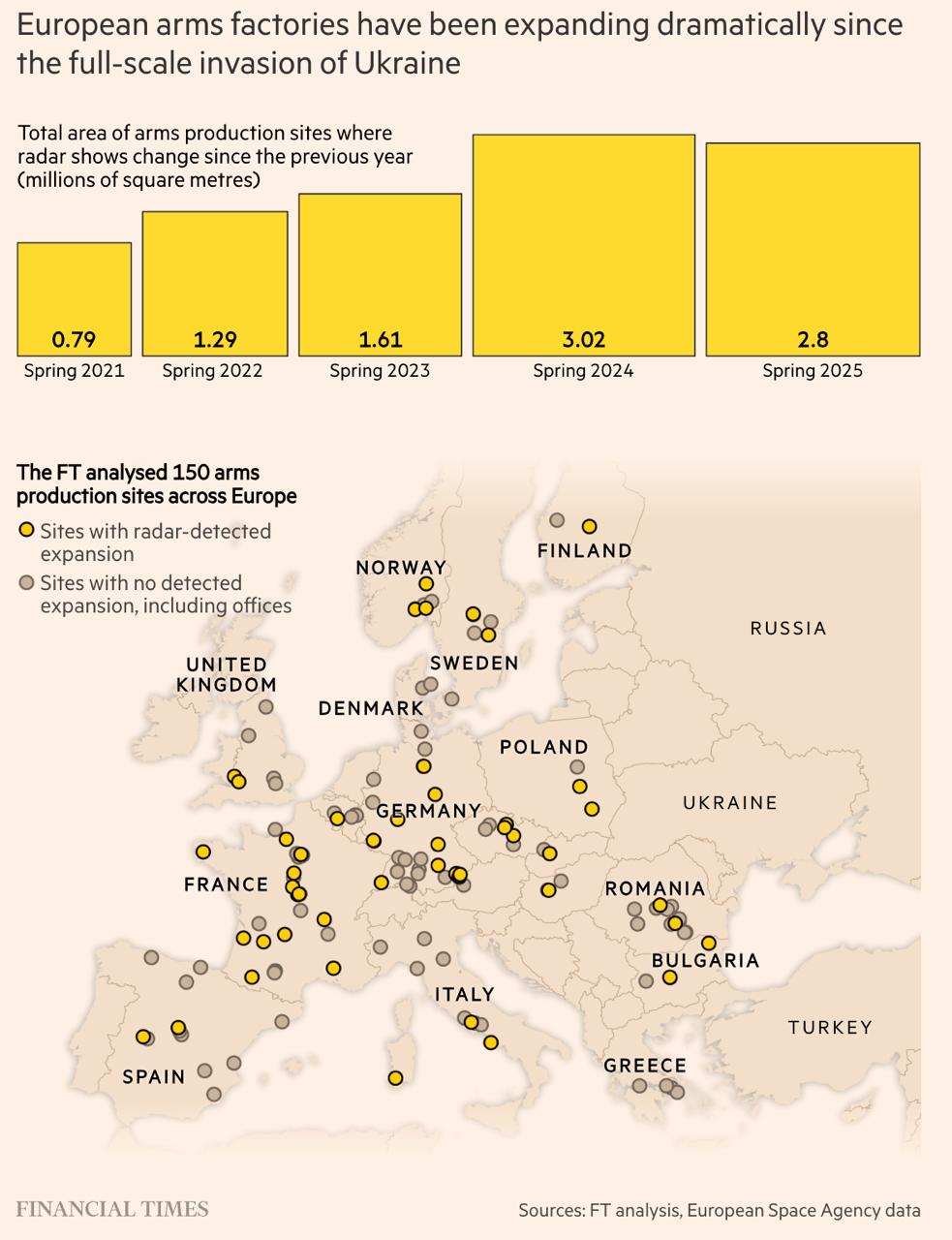European Arms Factories Expansion Map 2021-2025


Marcus Rodriguez
Historical Geography Expert
Marcus Rodriguez specializes in historical cartography and geographic data analysis. With a background in both history and geography, he brings unique...
Geographic Analysis
What This Map Shows
This visualization illustrates the expansion of arms factories across Europe from 2021 to 2025, highlighting a significant trend in military production and rearmament within the continent. The map serves as a crucial tool for understanding how geopolitical tensions and defense policies are shaping industrial landscapes in various nations. With a focus on the locations and capacities of these factories, viewers can immediately grasp the scale and direction of Europe's growing arms manufacturing capabilities.
Deep Dive into European Arms Manufacturing
The arms manufacturing sector in Europe has seen a notable transformation over recent years, driven by various factors including shifting global security dynamics, increasing defense budgets, and the resurgence of military tensions, particularly in Eastern Europe. According to data from the Stockholm International Peace Research Institute (SIPRI), Europe has experienced a steady increase in military expenditures, which has directly influenced the expansion of arms production facilities.
Interestingly, the European defense industry is not merely a collection of isolated companies; it represents a complex network of manufacturers, suppliers, and research institutions working collaboratively. Countries like France, Germany, and the United Kingdom are at the forefront, housing some of the largest arms manufacturers in the world, such as Airbus, BAE Systems, and Rheinmetall.
What's fascinating is that this growth is not uniform across the continent. For instance, while Western European countries invest heavily in advanced technologies for defense, Eastern European nations are rapidly increasing their military capabilities in response to perceived threats. This disparity in investment and production is pivotal when analyzing the map, as it reveals areas where rearmament is prioritized.
Moreover, the European Union has been actively fostering a more integrated defense market through initiatives like the European Defence Fund (EDF), aimed at promoting collaboration and innovation within the sector. This strategic move has encouraged many countries to bolster their defense capabilities, leading to the establishment of new factories and the expansion of existing ones. By 2025, projections suggest that Europe could see a 20% increase in arms production capacity, reflecting a broader trend toward self-reliance in defense manufacturing.
Regional Analysis
When examining the map, it becomes apparent that certain regions are emerging as significant hubs for arms production. For instance, the Franco-German axis is particularly noteworthy. France has ramped up its production of advanced weaponry, including fighter jets and naval vessels, while Germany has focused on ground systems and electronic warfare technologies. This collaboration is a direct response to the ongoing security challenges posed by Russia and the need for Europe to enhance its defense posture.
In contrast, Eastern European countries like Poland and the Baltic states have seen a surge in new production facilities. Poland, for example, has made substantial investments in its defense industry, aiming to modernize its military capabilities and align more closely with NATO standards. The map highlights new factories that have been established in regions like Silesia, which is becoming a center for defense manufacturing in Central Europe.
Southern Europe is another area of interest. Countries like Italy and Spain, while traditionally viewed as less significant in the arms industry, are now increasing their outputs. Italy's Leonardo S.p.A. is expanding its production lines for drones and cyber defense technologies, while Spain is enhancing its naval construction capabilities, reflecting a broader commitment to regional security.
Significance and Impact
Understanding the expansion of arms factories in Europe is crucial for several reasons. Firstly, it provides insight into how European nations are responding to evolving security threats and geopolitical tensions. The resurgence of military production has implications not only for defense policy but also for international relations and trade.
Moreover, the implications of this trend extend beyond military capabilities. Increased arms production can lead to job creation and economic growth within the manufacturing sector, yet it also raises ethical questions about the consequences of militarization. As countries ramp up production, the balance between security and peace becomes a pressing issue, particularly in a continent still grappling with the scars of conflict.
As we look toward the future, the map serves as a reminder of the ongoing changes in Europe’s defense landscape. With tensions between NATO allies and non-member states continuing to evolve, the arms production sector will likely remain a focal point of discussion among policymakers and analysts alike. Thus, the expansion of arms factories is not just a matter of military strategy; it is intertwined with the broader narrative of European unity, security, and stability.
Visualization Details
- Published
- August 14, 2025
- Views
- 94
Comments
Loading comments...